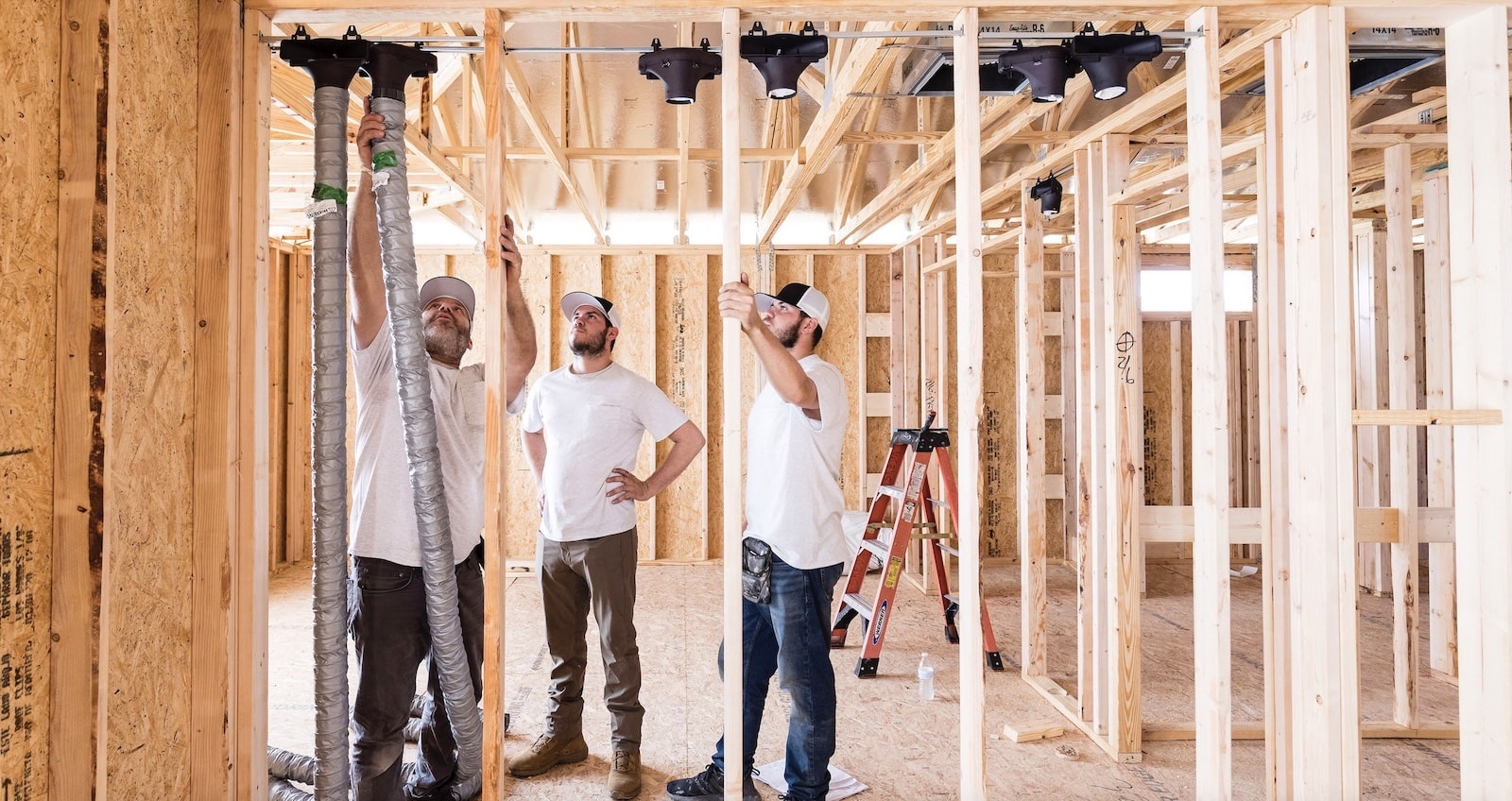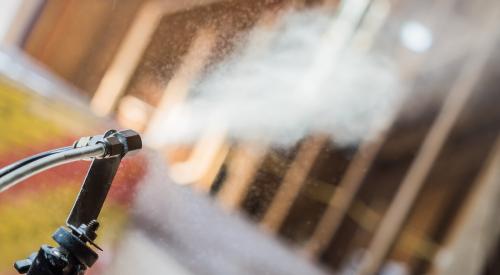For nearly a century, plumbers installed pipes the same old way, laboriously cutting and soldering metal pipes in the field. Then, in the 1990s, a revolutionary material called cross-linked polyethylene—better known as PEX—came along.
As we know now, PEX is a flexible tubing that requires far fewer fittings and no glue or solder to install ... and it doesn’t corrode. Some plumbers resisted PEX at first, but before long realized the ease and speed of the system was better for their bottom lines, without sacrificing quality. Today, PEX is the predominant plumbing system in new residential construction.
Now, a new duct system is set to transform the home heating and cooling industry in the same way, thanks to early investments by the Building Technologies Office at the U.S. Department of Energy (DOE).
RELATED
- Why Compact Duct Layouts for HVAC Make Sense
- Getting HVAC Right: Consider These Tips When Sizing and Specifying
- Flexible Ductwork Best Practices: Smooth, Sealed, and Separated
Developing a New Air Duct System for Home HVAC
Rheia, a new company that grew out of research funded in part by DOE’s Building America Program, is partnering with some of the country’s top home builders to demonstrate a patent-pending “plug-and-play” air duct system designed to be installed within conditioned space in today’s energy-efficient new homes.
The system consists of a manifold, uniform-diameter ducts, connectors, and diffuser components that snap together to form a nearly airtight delivery system without the use of tape or mastic. The ducts are small enough to fit inside wall cavities, making it easy to keep duct runs within conditioned space, which improves the performance and energy efficiency of the entire system.
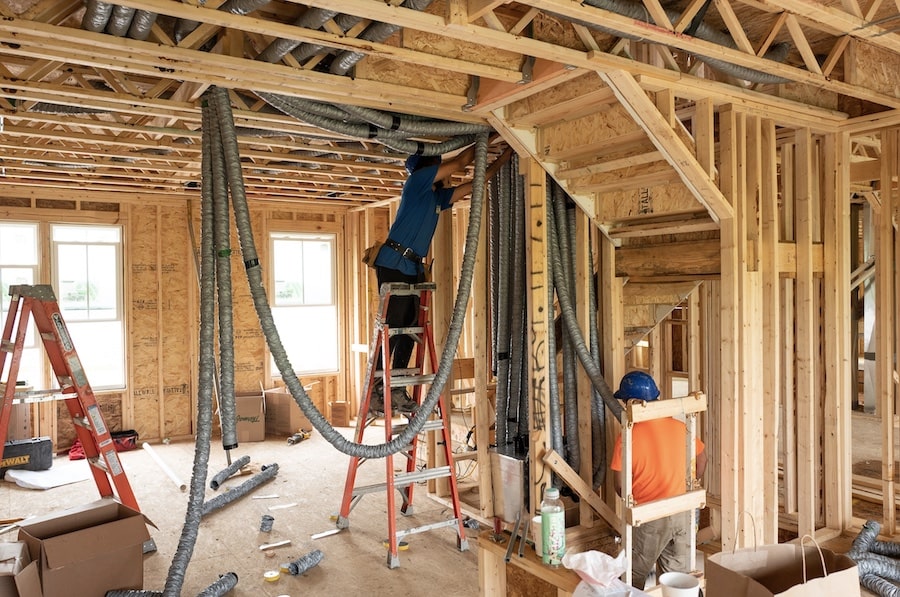
Rheia is a perfect example of “lab-to-living room” innovations that the Building America program has been working on for the last 25 years, a process that traditionally starts with building science experts tinkering around in their labs to eventually having that innovation used by some of the biggest builders in the country.
Addressing Several Air Duct Issues at Once
Conventional air duct systems are plagued with problems:
- They leak conditioned air
- They’re often under-insulated and improperly installed
- When ducts run through unconditioned spaces such as attics—as they often do—they lose energy, compromising the home’s energy efficiency and occupant comfort.
Think of it this way: If you have a furnace rated at 90% efficiency, but 30%of the air is leaking out before it gets delivered, it’s essentially operating only at 60% efficiency. Efficiency is not just about the equipment; it’s about the whole system.”
Builders understand these issues, but most don’t want to give up valuable interior space for ducting that would at least contain leakage within the building’s conditioned thermal envelope. It’s also difficult to make dropped ceilings and soffits look good.
In 2015, Pittsburgh-based IBACOS—a long-time Building America partner with nearly three decades of research on air delivery systems—partnered with the Housing Innovation Alliance on a Building America project to work out the kinks.
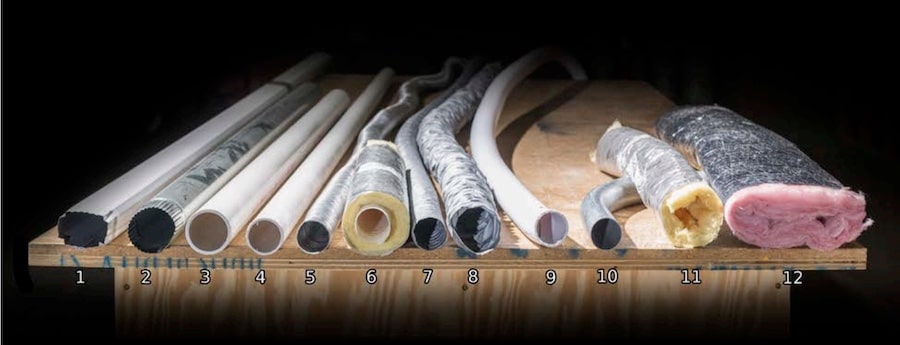
Considering several ideas, the team eventually landed on a simple, builder-friendly “plug-and-play” duct system located within conditioned space. The system uses just five components compared with 18 for a conventional trunk-and-branch HVAC duct system, and most of the components that connect the ducts are made with a fiberglass cloth over a coiled wire frame.
LEARN MORE
- How Advances in HVAC Are Affecting Indoor Comfort and Occupant Health
- Net Zero Energy: The Ultimate Z.E.N. Home's Indoor Air Quality System
In fact, IBACOS used the “PEX model” when developing the system. “We had the idea that with low-load homes we can use smaller ducts,” says Andrew Poertschke, a Building Performance Specialist for IBACOS. “If you tap them all into a central manifold, it gives you better and more predictable airflow. Plus, you can fit them into conditioned space.” The system also uses drastically fewer components than a conventional HVAC system.
Part of the project was to develop a design methodology for determining the length and number of duct runs. Because the ducts are all the same size, some rooms require more than one duct run; even so, the ease of installation saves time.
From 2015 to 2017, IBACOS performed lab tests and modeling to validate the technology. It built a mock-up of a two-story townhome at the IBACOS Innovation Center and used it to compare material and labor costs for a trunk-and-branch HVAC system and two plug-and-play systems. Results from this time-and-motion study showed a significant drop in labor costs for the plug-and-play system.
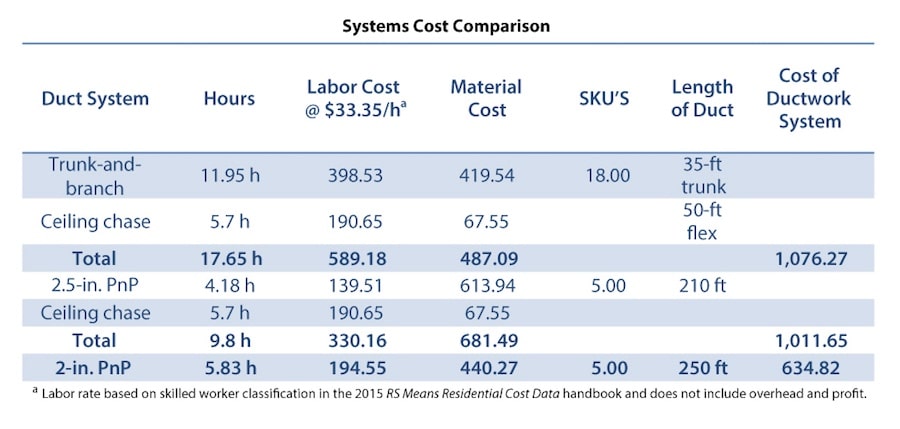
“As we worked more with the system, we started to realize that this idea may have a very strong labor value proposition and could potentially revolutionize the industry,” Poertschke says.
It was critical that the ducts be small enough to fit into wall cavities. Lab testing and modeling confirmed that most homes up to 4,200 square feet in climate zones 3–5 could be adequately conditioned with 3-inch-diameter smooth ductwork. Smaller homes could be conditioned using 2.5-inch or 2-inch ducts.
To validate the modeling, IBACOS researchers installed the system in an unoccupied test house in Pittsburgh, monitoring it for airflow and comfort data. They also used this HVAC duct installation to study whether door undercuts were adequate as the primary means for return air transfer (hint: they were).
An Innovative Business Model
At that point, the IBACOS team began pondering how to bring the solution to market and discussing it with their trusted advisors, including Alan Laing.
Laing, who has led several large building companies, including a stint as VP of operations at Pulte Homes, was enamored with the potential for the project, enough so that he came on board to help form a new company called Rheia. (The name is derived from the Greek “mother of the gods,” whom Laing calls the “Goddess of Comfort.”)
Rheia officially launched in early 2019, with the aim of bringing the plug-and-play duct system to market in mid-2020.
“There was a strategic interest in getting builders to be investors because they are also the customers,” Poertschke says. “We knew we could drive sales more quickly this way.” To date, Rheia has raised capital from eight of the largest home builders in the country, along with more than 30 individual investors.
Because the ducts are all the same size, some rooms require more than one duct run; even so, the ease of installation saves time.
“A lot of the uniqueness of the technology comes down to the parts and pieces,” says Nigel Watts, Rheia’s VPof product, who has more than three decades of product development expertise, including a stint at IBACOS. “To reach labor savings with an airtight system, we have done a lot of engineering,” he adds.
Despite the system’s remarkable progress to date, “you can’t go into The Home Depot and buy a Rheia system off the shelf,” Poertschke says. Instead, the company sells directly to contractors and builders. Contract manufacturers make the components, and supply-chain software company IndustryStar Solutions, which has extensive experience in the automotive industry, helps manage the supply chain and ensures the parts are delivered to jobsites.
Into the Field: Rheia HVAC Ductwork Gets a Test Drive in New Homes Nationally
After validating its performance, the next step was to pilot Rheia in new homes across the country.“We knew the system would work,” Poertschke says. “So we started going into each market and seeing how the trades responded to it.”
Throughout 2020, Rheia worked with several home builders to install the system in 13 homes in different climate zones, including Baltimore, Indianapolis, Orlando, Fla., Pittsburgh, and San Diego. The company also used this time to secure the required certifications from Underwriters Laboratories (UL) and source injection molding and production capacity.
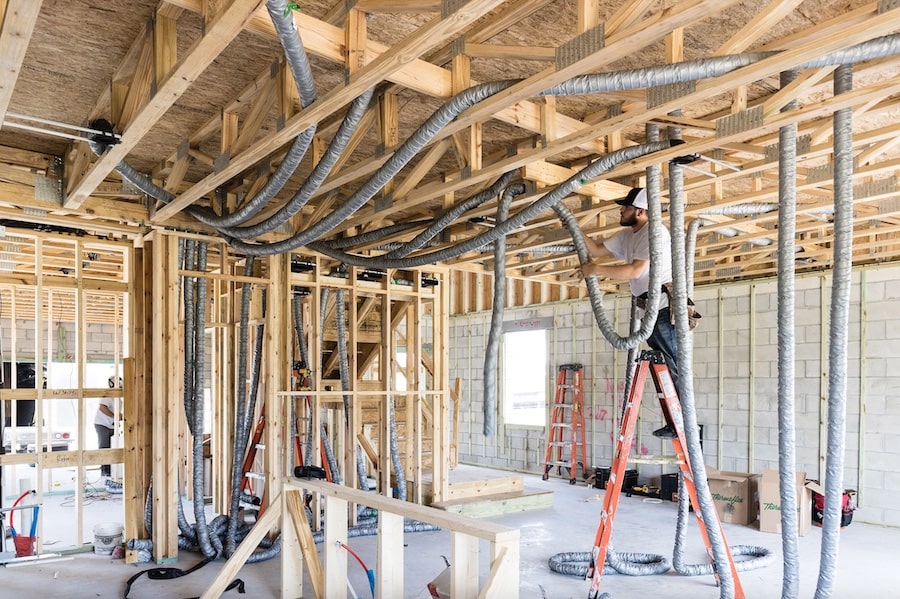
Feedback from HVAC installers has been very positive, Watts says. “It’s easier for them. It’s less messy, safer, and quicker.”
The pilot programs have given builders a chance to test-drive the system before using it on a larger scale. “It’s the first stage in the sales process,” says Anthony Grisolia, managing director of Innovation for IBACOS. “Builders want to try it out to validate the claims.”
HVAC Innovation Test: Bring on the Builders
One of the participating investor builders was Pulte Homes, the nation’s third largest home builder, which was motivated to invest in the plug-and-play system because of its commitment to innovation, but also because of its close ties to IBACOS and its PERFORM platform.
After visiting the Pittsburgh test site, the home builder agreed to mock up the system for one of its floor plans.“Being able to visualize the system was very impactful,” says Jeff Townsend, national procurement manager for Pulte Homes.
By placing the Rheia ducts in conditioned space, Pulte Homes was able to shrink the temperature differential by several degrees and downsize the system equipment by half a ton.
Soon after, Pulte decided to pilot the system in one of its homes in Orlando, Fla. The installation was completed in May of 2020. After construction, Pulte monitored the home to make sure it was delivering the expected level of comfort, simulating different conditions as if the home was occupied.
There were questions, Townsend admits. The system looks a bit different. Air comes out of the registers in a circular pattern rather than straight ahead. However, he says that satisfying customers requires deconstructing how HVAC is done: that is, to stop forcing air through hot attics and eliminate the “imperfect design” of the mixing box. “With conventional duct systems, you often end up overheating or overcooling one side of the home,” Townsend says.
On average, conventional systems result in a seven-degree temperature difference from one part of the house to another. By placing the Rheia ducts in conditioned space, Pulte was able to shrink the temperature differential by several degrees and downsize the system equipment by half a ton—a significant cost and energy savings. A RESNET HERS Rating analysis also revealed that having the ducts in conditioned space yielded an improvement of four to five ratings points.
RELATED
Pulte’s Orlando test home sold at the end of 2020. The company plans to follow up with the new homeowners throughout the coming year. “We want to understand what this system does for our homeowners,” Townsend says. The company has also initiated a pilot in Indianapolis for a system that provides both cooling and heating and is looking at other regions to determine where the system will best be utilized.
Feedback from the pilot homes is being used to tweak some of the physical components to make them easier to install and to reconsider some of the system’s aesthetics.
Meanwhile, after a second round of fundraising, Rheia’s next step is transitioning from the pilot phase to a production model toward seeing many more new homes using the plug-and-play HVAC system that finally gives the market a solution builders will use and their customers will like.
About Building America’s Research-to-Market Plan
The U.S. Department of Energy (DOE) Building America Program has spurred innovations in building efficiency, durability, and affordability for more than 25 years. Elevating a clean energy economy and skilled workforce, this world-class research program partners with industry to leverage cutting-edge science and deployment opportunities to reduce home energy use and help mitigate climate change.
The Building America Research-to-Market Plan identified three integrated road maps:
- High-performance, moisture-managed envelope systems
- Optimal comfort systems
- Optimal ventilation systems and indoor air quality (IAQ) solutions.
Each of these road maps is designed to strategically tackle the integrated challenges related to achieving wide adoption of energy-efficient and healthy high-performance homes.
Eric Werling is national director of the Building America program for the U.S. Department of Energy. He’s an expert in residential energy efficiency, indoor air quality, and building sciences and is focused on reaching zero carbon emissions in the next decade.
